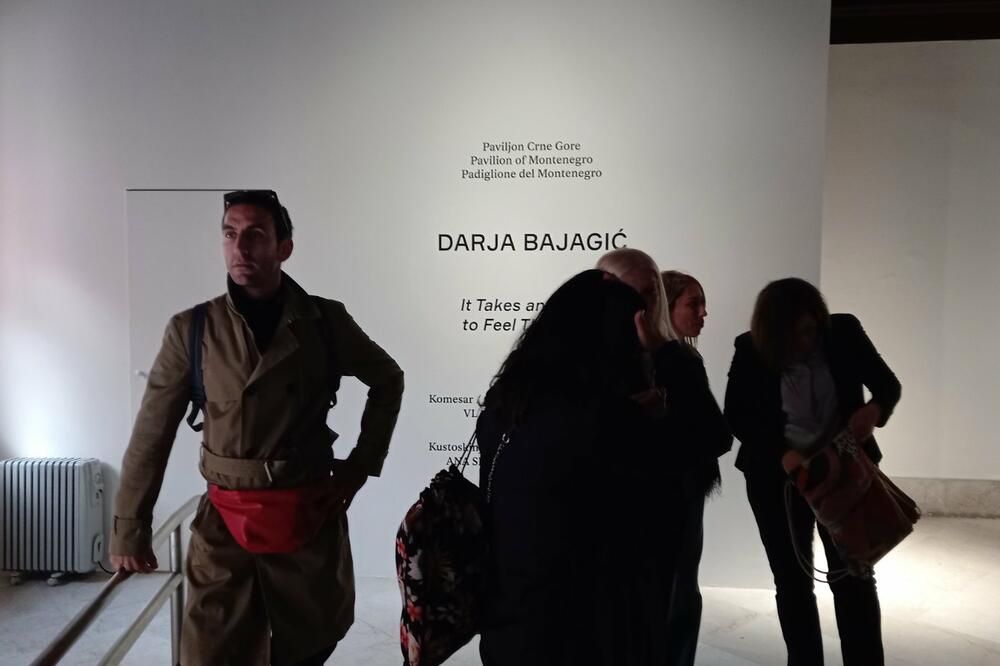History repeats itself as a sanitized, neoliberal limbo. It is neither hell nor heaven, but stuck in the eternal present; of the present, carefully tailored to look cool, polished and devoid of frills.
She wrote that down Ingrid Luquet-Gad in the text "What you don't see is perhaps what you will get" which is in the catalog of the Montenegrin pavilion at the 60th Biennale of Contemporary Art in Venice.
The Montenegrin pavilion at the Venice Biennale of Contemporary Art was designed by female artists Darja Bajagić and curator Ana Simona Zelenović presenting an exhibition called "It takes an island to feel this good".
An exhibition that deeply explores the concept of identity, migration, transformation and freedom, using the island of Mamula as a metaphor for the complexity of human experience and life, successfully connects with the theme Andrea Perosa "Foreigners everywhere".
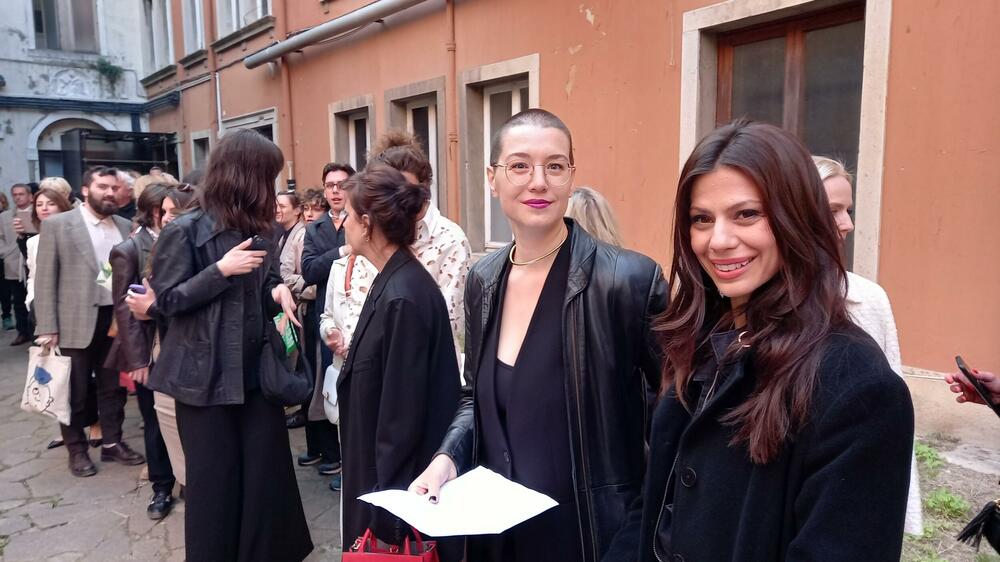
In the context of the theme "Foreigners everywhere", Darja Bajagić's works encourage the questioning of how various transitions and globalization have shaped our (micro)worlds, but at the same time it emphasizes the importance of individual experience, human resilience, courage and resilience, and reminds us of the eternal and seemingly unattainable struggle for human rights, both in crisis situations and in everyday life.
Through large-format works in geometric shapes from the classic rectangle, through the triangle to the trapezoid and a subtle, but intriguing and tense installation that represents the chains and shackles of prisoners, Bajagić takes the visitors of the Montenegrin pavilion on a journey through the history of the island of Mamula: from the defense fortress, the camp, to of the luxury hotel complex, which is rounded off by the very name of the exhibition.
"Welcome to the island of Mamula: a small Montenegrin stretch of land located in the middle of the Adriatic Sea and the rocky home of an impregnable 19th-century fortress that occupies the apparent entirety of its surface. Today, there is a luxury hotel on that site, whose website says: 'The word 'unique' is often overused. However, the island of Mamula can best be described with it'. If you scroll down, in a font that seems to be Swiss - the catchphrase is written: 'It takes an island to feel this good'. We are already aware of how the universal, post-national order of empire, without exteriority, encompasses the entire reality; we also know how various capitalisms only reshape this one and the same reality. And yet pleasure capitalism rarely seems irreconcilable: it is a paradise of consent production, tailor-made for our post-political age. When the water is so blue, any anger, shocking fact or disturbing truth would just float away - right?” Luquet-Gad wrote explaining the context segment.
She recalls that it was this catchphrase "It takes an island to feel this good" that served as the title of the Montenegro pavilion and Darje Bajagić's exhibition at the prestigious, probably the most important world fair of contemporary art.
With his imagined concept, Bajagić encourages thinking about space, identity, past and heritage, and explores ideas and ways in which space can be reshaped and redefined over time, suffocating or reviving what has been experienced, which can be sensed in the atmosphere of the place.
Her work is felt to raise questions about boundaries, control and power, questioning consumerist and capitalist culture, while illuminating the complex dynamics between the individual, society, global politics and the economy. Through aesthetically powerful visuals and deep symbols, Bajagić asks the viewer to draw his own conclusions based on experience and knowledge, he does not offer a thorough and detailed explanation of the event, while in the accompanying catalog the Museum of Contemporary Art offers the opportunity to complete the entire image and concept.
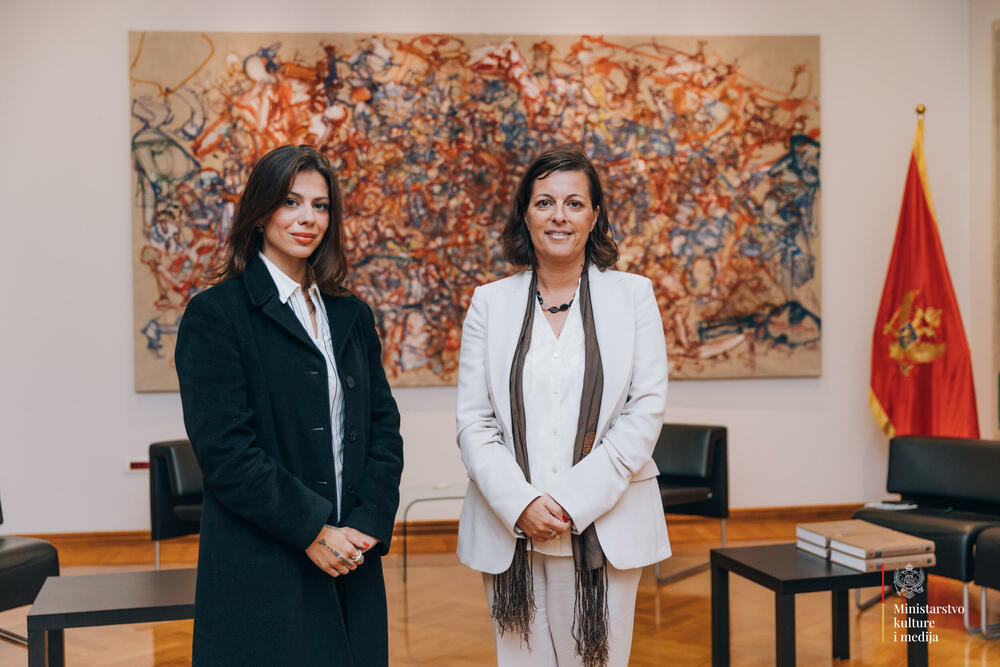
Bajagić told "Vijesti" that she does not perceive her role as an artist in an activist way, nor in the way that she herself should make certain conclusions and judgments by imposing positions, but in a way that leaves room for the observer to raise certain questions and think about them himself.
It is this potential of the works to evoke a wide range of emotions in the viewer and a powerful visual and symbolic narrative, which calls for introspection and (self)examination, both of the past and the present. It is also inevitable that the works may cause someone a feeling of discomfort and sadness, sympathy and tension, considering the life that takes place in/on them.
The place where the shackles are attached to the wall is associated with the additional limitation of the movement, freedom and life of the imprisoned prisoners, which can startle the observer from the space he is walking in and cause a feeling of claustrophobia, torture and suffering, reminding of the fatal periods of domestic, but also common European, and even of the world's past. At the same time, this installation can awaken a feeling of empathy and solidarity towards the victims of the prison system and repression.
The artist's approach is not such that she only documents historical changes, but also finds the emotional aspects of different time periods, transformations and transitions. It encourages the viewer to confront the complexity of the human experience, from pain, defeat, sacrifice, captivity and violence, to hope, struggle, courage, sacrifice and ultimately, to freedom. In addition to the aesthetic and spatial endeavor of this year's Montenegrin pavilion, there is also an emotional and intellectual experience that inspires and leaves a deep impression on visitors who, with intention or not, will find themselves in the building on the corner of the Ospedaletta alleys.
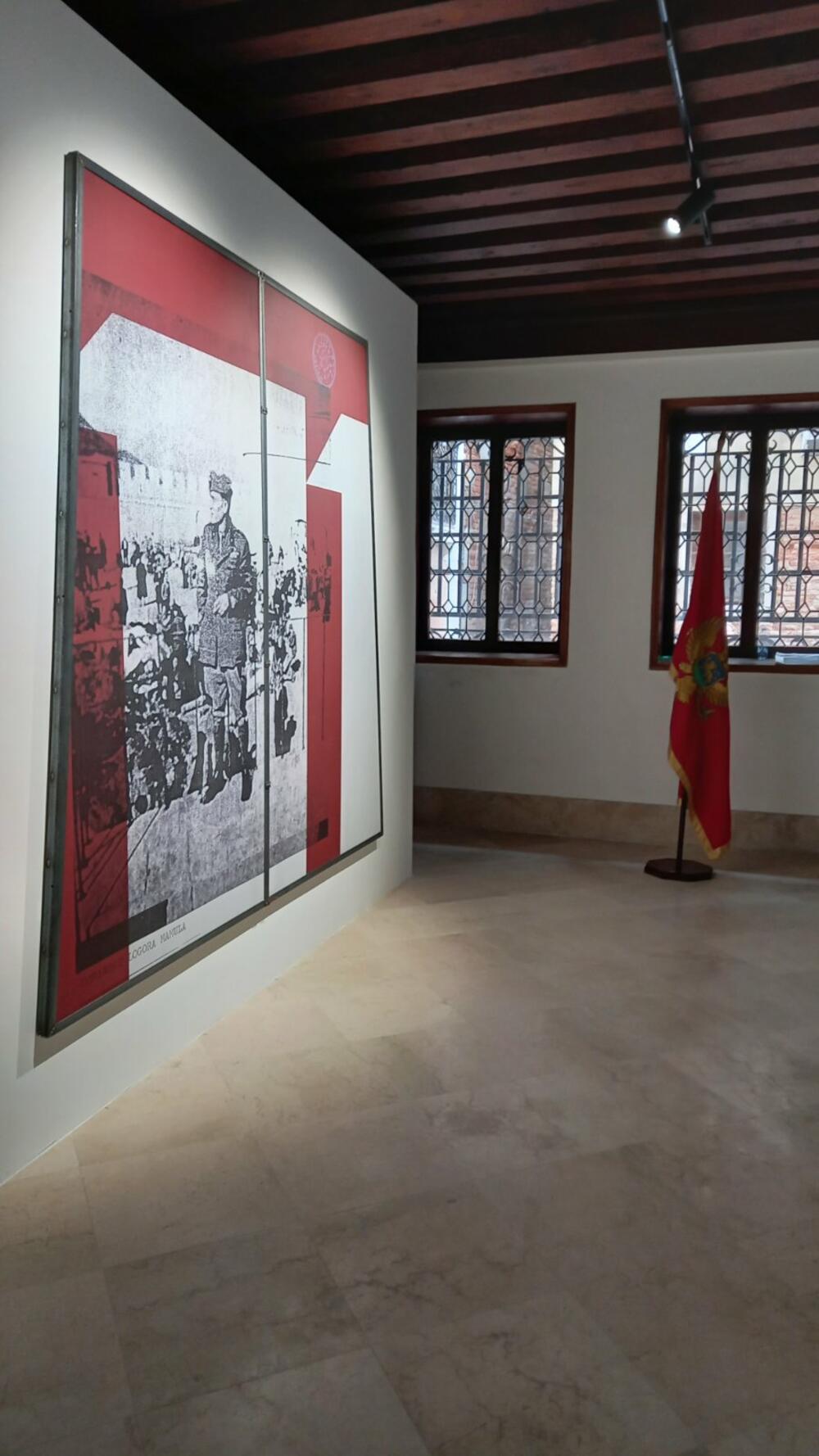
The connection between the past, present and future is awakened, as well as the idea of the role of the individual in the wider social context.
Gallerist Marion Dana from Paris, who runs the "New Galerie" gallery, attended the ceremonial opening of the Montenegrin pavilion, and in an interview with "Vijesti" she did not hide her pride due to her long-term cooperation with Bajagić.
"I have been working with Darja since 2012 and I think she is a fantastic, powerful and strong artist, which I believe she will remain. The exhibition with which she represents Montenegro is really strong and effective, especially because Darja always comes up with some of her practice that can communicate about many important topics, and she can always mix in some of her personal history, experience and thoughts, and it does it all in a very powerful, accurate and precise way that I like. I particularly like her work because it is personal and universal at the same time," said Dana.
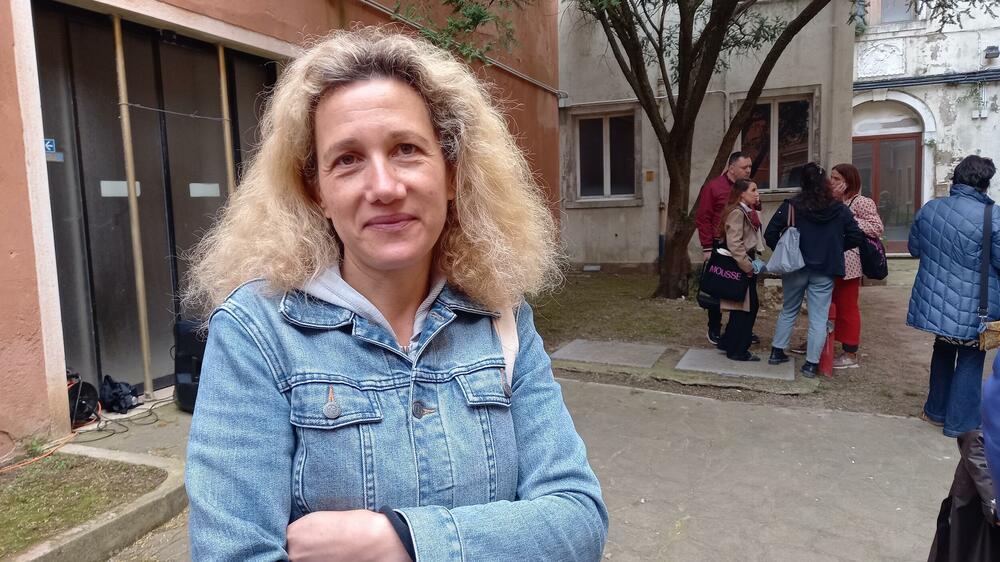
The artist from Spain has a similar impression Saint Amos.
"I really liked the Montenegrin pavilion. I am very impressed with the frames and sizes of these true masterpieces. The colors are just amazing! While you look at those pronounced deep shades of blue, red, and even gray, you go deeper and deeper, and the images, pixels, frames draw you into some very cool, interesting and challenging game. As for the handcuffs on the wall, although it's a very subtle installation, I have to admit that I prefer lighter things, but I understand the move and the whole concept," commented Amova.
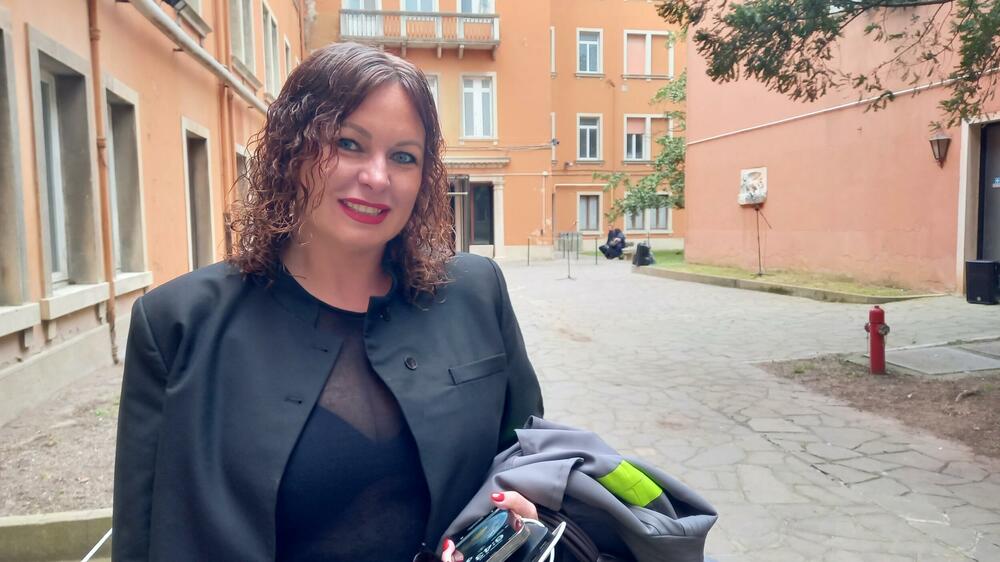
Gallerist Dana noted that the paintings evoke deep feelings and emotions, introspection, call for a culture of memory and respect, but also correspond with the present and current problems in the world.
"This exhibition and Darja's works are very moving and strong, because it is about the collective history of Europe, but also the history of (her) family." It is a mixture of references to the personal, the family, the past of the community, the state, but also the whole of Europe and the world. I think that her work concerns all of us and that it speaks of all of us in Europe, but also of all of us individually as individuals. You know, all Europeans during the war had to decide what move to make and what step to take. On the other hand, all that is happening now in Europe and in the world should warn us and encourage us to remember what happened before. That's why Darja's work succeeds", commented Dana and said:
"I can only say to the people of Montenegro and your readers that you can and should be proud of it."
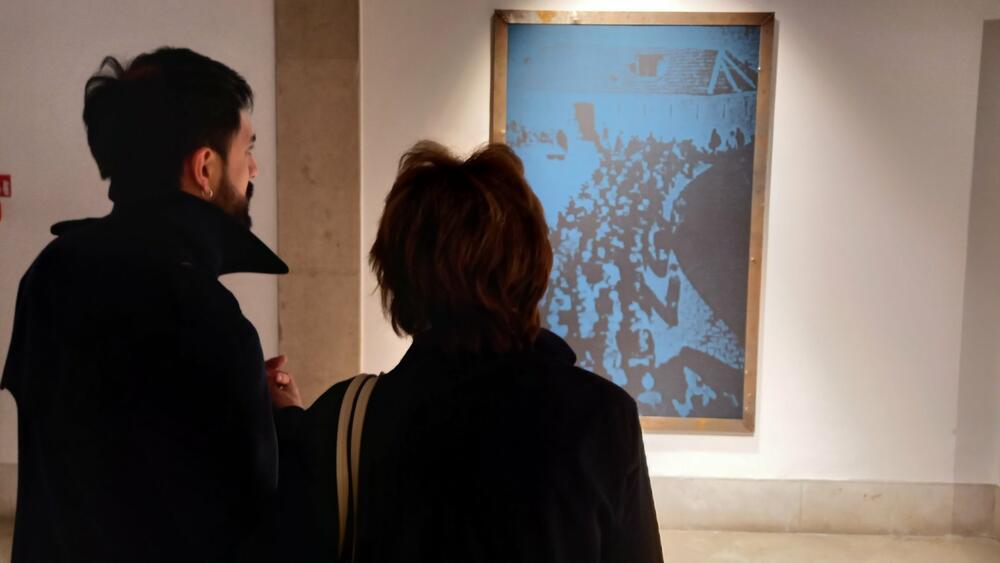
She also noticed that Bajagić remained consistent with her expression and work, despite her ability to adapt and "respond" to what was asked of her.
"She could have created some new work that would perhaps respond to the theme of the Biennale in a very specific and obvious way, without using and continuing her previous research, and not starting from herself and her needs, after all, but that what I like is that she didn't have to change what she practices and what she was already working on, not even her forms, themes and expression for which she is known. I appreciate that very much and I think that she managed to present herself, her country, as well as the entire story of the island, which she thematizes in the exhibition, very well. I really believe in her and I believe in her work," said the gallerist from Paris.
Artist Amova from Spain focuses on dialogue in her work.
"I am looking for communication between recycling, nature, architecture, between different shapes, shades, light and colors. In particular, I am currently recycling tennis balls and creating an installation," she said and pointed out that dialogue and communication, although directed at other objects, is what she finds in the Montenegrin pavilion.
"I was in Montenegro and I have to admit that I loved it a lot, you have a really amazing country. On the other hand, I visited the Montenegrin pavilion in Venice for the first time, even though I followed the Biennale before. I came at the invitation of my friends, also because I was interested in advance by what I heard about your pavilion and the artist," she said.
The Montenegrin pavilion undoubtedly offers visitors a valuable and admonishing experience, as confirmed by the impressions from the opening, among which were a large number of professionals: artists, gallerists, curators, art historians and theorists, and managers of various cultural institutions.
The mechanics of covering up the past
In the text "What you don't see is perhaps what you will get" that accompanies the exhibition catalog, Ingrid Luquet-Gad wrote a little more about the island that inspired Bajagić.
"After she returned to her native country and settled on the Luštica peninsula, she saw and heard stories about it every day from various people whose relatives were in Mamula," she noted and added:
"The rich historical past of the fortress, which was built in 1863 by the Austro-Hungarian general Lazar Mamula, after whom it was named, accumulated in the artist and inspired her more and more, encouraging her to conduct thorough research... In addition to its defensive function, during the Second World War, Benito Mussolini's fascist forces turned the fortress into a concentration camp," Luquet-Gad wrote, thus putting the whole story and theme of the pavilion in a wider context.
"After 1942 until the end of the war, its abandoned location allowed secrets to be buried, dissent to be stifled, and oblivion to continue to be nurtured. The last part of the island's official development began in 2015, when the government gave permission to a Swiss-based holding company to turn the former camp into a luxury resort. Privatization began, and the mechanics of covering up the past began. Gradually, in the media representation of the hotel and in their communication with the public, the camp will slowly turn into a prison, and the erasure of history will merge with the 'careful restoration' of the building", stated Luquet-Gad.
She pointed out that Darja Bajagić returned to Montenegro after establishing herself internationally as an "unshakable observer of symbolic construction, but also of the media circulation of images: those hidden and forbidden, and therefore often also those fetishized and collected."
Bajagić left Montenegro in early childhood, she grew up in Egypt, later in the United States of America. Bajagić graduated from Yale University in 2014, and very quickly won the attention of the world artistic public.
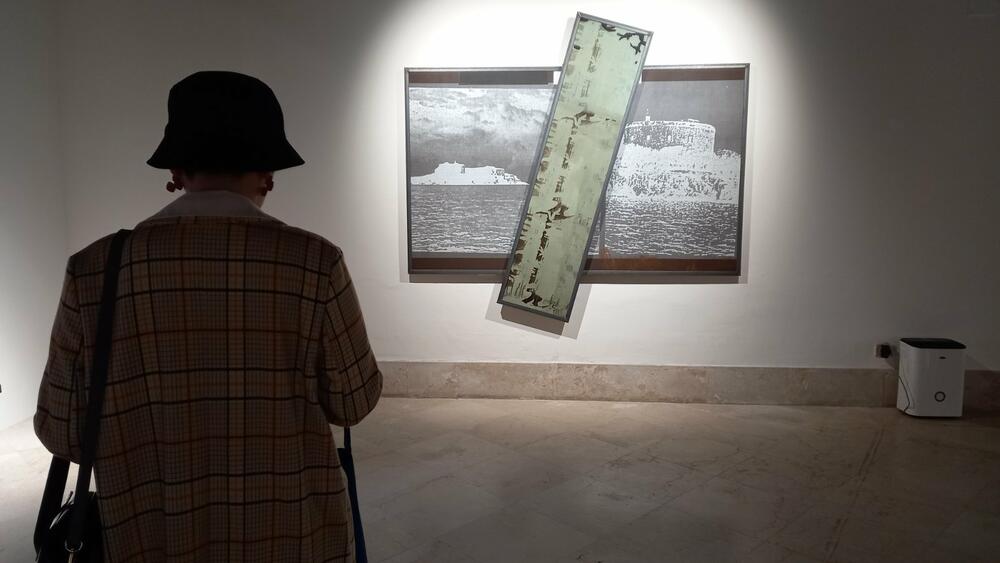
Pavilion opened on Thursday in Venice
The Montenegrin pavilion at the 60th Biennale of Contemporary Art in Venice was opened on Thursday in a new space in the Ospedaletto part of the city, in front of a large audience.
The ceremony was attended by a delegation from the Ministry of Culture and Media of Montenegro, led by Minister Tamara Vujović, as well as from the Museum of Contemporary Art of Montenegro, headed by director Vladislav Šćepanović. In addition to them, the opening was accompanied by a large number of artists, curators, historians and art theorists from Europe and the region, mostly from Slovenia and Serbia, whose Minister of Culture and Deputy Prime Minister Maja Gojković was also at the event.
The authors of the exhibition, Bajagić and Zelenović, as well as Šćepanović, who is the commissioner of the Montenegrin pavilion in Venice, and Minister Vujović addressed the audience.
The exhibition team is completed by architects Predrag Krstić, Andrea Pajković, as well as the technical team consisting of: Prele Prelević, Nemanja Radević, Rajko Raičević and Novica Vuković.
With thanks to everyone who participated in the realization of the installation, Šćepanović pointed out that he hopes that this presentation will be successful and that it will open new paths for future presentations of Montenegro.
"This work is thematically related to Montenegro and reflects the recognition of the pavilion in the national sense, but at the same time it is also a global theme, which is a reflection of contemporary society in relation to cultural heritage, but also the ideology of bizarre enjoyment that introduces us to the accumulation of capital and the production of egoistic need. It is also related to the theme of the biennale, so I can say that it has great potential for a multi-layered interpretation, but also a strong emotional impact on the observer", he pointed out.
The Montenegrin pavilion was opened in Venice on Thursday by the Minister of Culture and Media of Montenegro, Tamara Vujović. She spoke about the importance of the Venice Biennale, which brings together art and culture from all over the world, she recalled the specifics of Venice and its unique beauty and the artists it inspired, as well as this year's display of Montenegro. Vujović pointed out that the Ministry of Culture and Media, as the general sponsor of Montenegro's participation in the 60th Biennale, this year more than ever has reason to feel very proud.
Bonus video:



